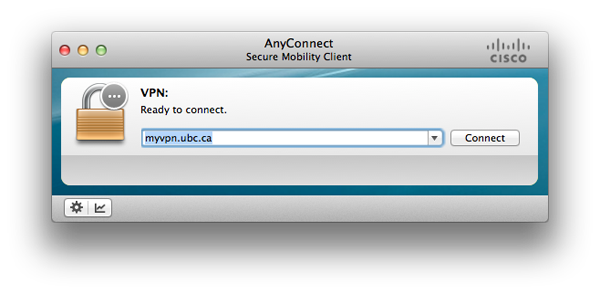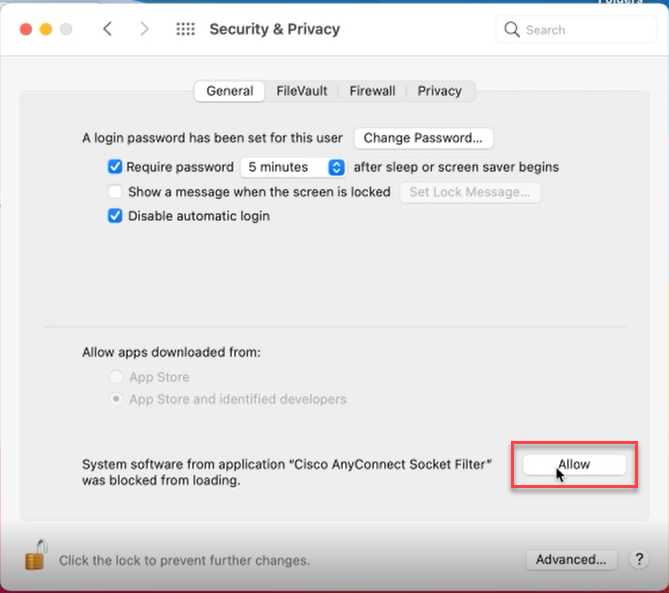Web-based AnyConnect VPN Client Setup Enabling Access to Your Local (home) Network Devices Connecting to myVPN service Follow the instructions below to configure Windows XP/Vista/7/8 to connect to UBC's myVPN service. The myVPN service uses the Cisco AnyConnect Secure Mobile client. If you have already gone through the setup, see the Connecting to myVPN section. MyVPN Cisco AnyConnect Client Updates UBC Information Technology myVPN Cisco AnyConnect Client Updates During the February 23 rd quarterly maintenance window, we will be upgrading the myVPN Cisco AnyConnect client from version 2.5 to 3.1. This new version provides support for Windows 8 and Mac OS X Mountain Lion operating systems. Cisco AnyConnect Start Before Login Module. The University of British Columbia Okanagan Campus ADM024 - 3333 University Way Kelowna, BC Canada V1V 1V7.
Ubc Cisco Connect
How to access your UBC IT Central Home (H) drive remotely from a PC 1. Connect to UBC using the Cisco AnyConnect VPN client. Here is a link to the UBC IT setup of the AnyConnect client if you don’t have it installed already. Be careful to choose the VPN client which matches your particular operating system, e.g. Cisco AnyConnect Secure Mobility Client empowers remote workers with frictionless, highly secure access to the enterprise network from any device, at any time, in.
Helpful resources to support SHCS staff in transitioning to remote work.Quick links:
→ Connecting to Your Desktop Remotely
→ Looking After Your Wellbeing
→ Other Resources
SHCS staff at UBC Vancouver and Okanagan can log onto their UBC desktops and access shared drives remotely.
Step 1: Download Two Pieces of Software
Cisco AnyConnect Secure Mobility Client (the program that runs the UBC VPN)
- Browse to myvpn.ubc.ca
- Log in using your CWL credentials
- Follow the prompts to download and install Cisco AnyConnect Secure Mobility Client
VMware Horizon Clients (the remote desktop software)
- Browse to my.vmware.com
- Download and install the version of VMware Horizon Clients that is compatible with your home computer
Step 2: Connect to Your Remote Desktop
Connect to the UBC VPN
- Open Cisco AnyConnect Secure Mobility Client
- Select a server (myvpn.ubc.ca or myvpn2.ubc.ca)
- Log in using your CWL credentials
- Once connected, leave Cisco AnyConnect running in the background
Connect to your remote desktop

- Open VMware Horizon Clients
- Type “vdi.housing.ubc.ca” in the connection server field
- Type your username and password (the same ones you use to log onto your computer at work)
- If there is a domain field, enter “Housing”
Step 3: Disconnect When You Are Done
Cisco Anyconnect Vpn Instructions
Given that UBC’s VPN servers are working at maximum capacity right now, please:
- Disconnect from the VPN when you do not need it for work
- Avoid streaming videos while you have the VPN running
Cisco Anyconnect Ucl
Troubleshooting
- The VPN must always be connected before attempting to connect via VMware
- If you are unable to connect to the VPN, try selecting a different server because it may be overloaded (myvpn.ubc.ca or myvpn2.ubc.ca)
- If you are still unable to connect or receive an error message, please contact Sam Pat at sam.pat@ubc.ca or Aaron Ng at aaron.ng@ubc.ca.
During this time, it is so important that you take time to care for yourselves and your families. To that end Melissa Baker, our Nutrition and Wellbeing Manager, shares some simple but effective tips you can put into practice and remind you of UBC-specific resources to support you and your family and colleagues:
- UBC’s Employee and Family Assistance Program – Your EFAP provides immediate and confidential assistance for any work, health or life concern. Visit www.workhealthlife.com for more information (search UBC Vancouver Campus.)
- UBC Benefits – These include $2,500/person/year for counselling and psychological support services, including licensed psychologists, social workers or registered clinical counsellors. No doctors note is needed and fees are reimbursed 100% (based on a reasonable and customary charge).
There are many aspects of wellbeing to consider when working remotely. Here are some best practices and resources gathered from experience and research.
Physical
- Find a comfortable space to work. The UBC ergonomics resources page can support you in setting up a space.We also recognize that it may be hard to have a designated space to work from, other than the kitchen table etc. You could consider setting up agreements with your significant other/older kids/roommates that when the door is shut (or headphones are on) they don’t bother you but you’ll come out at least a few times a day to hang out while you take a break.
- Don’t forget to move! Get up and move every hour. If you have phone calls that don’t require video, stand up and pace or walk. Stretch and remember your posture. Here are 10 stretches you can do.
- Create a routine. Treat it as you would if you were going to the office. Have a start time, and an end time. Take a lunch break – consider getting some fresh air. It is essential to your wellbeing that you are able to create a separation from when you are working, to simply being at home. The more you can structure this, the better you will be at getting your work done during the day, and then relaxing at the end of the day. The risk of these two blending is high so start with this right away.
- Listen to music. Listening to background music can be very helpful, especially if you are not in the house alone. Spotify and other music providers often offer music with the theme ‘Focus’. Here’s an Entrepreneur article that explains why.

Social

- Connect with your colleagues. It will be weird to not see them every day. Consider creating a group chat on Whatsapp or other platform to check in at the beginning and end of the day. See how you can help each other, and also to help keep spirits up.
Working from home with kids
Training to master remote work (you’ll need a LinkedIn account to see these resources)
Access to ECE resources such as workstations, printers, and network shares is limited to ECE subnets, the ECE VPN, and the 'ubcprivate' wifi network. All other access is blocked by the ECE firewall.
For access to the ECE VPN and ubcprivate, contact it@ece.ubc.ca. In your request, please specify your CWL username and your affiliation with ECE.
Connecting to the UBC VPN
A Cisco AnyConnect VPN client can be downloaded from https://myvpn.ubc.ca.
The client should connect to the server myvpn.ubc.ca. Log onto the VPN using your CWL credentials.
If you have been granted access to the ECE VPN, append .ece to your CWL login. For example, if your CWL login is spock, log on as spock.ece. (Without the .ece suffix, you would be placed on the UBC network, but outside the ECE firewall.)
Connecting to the ubcprivate wifi network
If you have been granted access to ubcprivate, append .ece to your CWL login. For example, if your CWL login is spock, log on as spock.ece.
Ubc Myvpn
See Also
